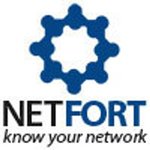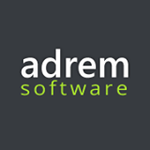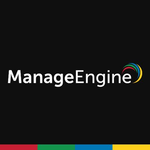What Is Network Troubleshooting Software?
Network troubleshooting software is a useful tool that assists businesses and individuals in identifying and resolving issues with their computer networks. It provides a comprehensive solution for detecting and resolving network connectivity, performance, and security issues. This software can be used to diagnose problems with LANs, WANs, and even cloud-based networks. This program uses a number of diagnostic tools and strategies to find and resolve network issues.
It can run network scans to locate devices and their configurations, monitor network traffic for potential bottlenecks, and examine network logs to identify issues. Some advanced network troubleshooting software also contains functions like network mapping, real-time monitoring, and network performance evaluation. One of the primary advantages of using network troubleshooting software is the opportunity to save time and resources.
It reduces the need for manual troubleshooting, which can be laborious and time-consuming. Automated tools and reports can help identify and repair network issues quickly, reducing downtime and keeping corporate operations operating smoothly. Furthermore, network troubleshooting software is critical for ensuring network security. It may detect and identify unauthorized or malicious network devices, as well as potential security weaknesses and advice for how to address them.
When choosing network troubleshooting software, it is critical to select one that is user-friendly and includes a complete range of capabilities. It should also be compatible with your network architecture and offer regular updates to ensure peak performance. Investing in reliable network troubleshooting software is a wise move for any business or individual who wants to maintain their network working smoothly and safely. With its extensive features and automation capabilities, it can help you save time and resources while also ensuring a robust and secure network.
What Are The Recent Trends In Network Troubleshooting Software?
Network troubleshooting software is continually improving to keep up with the ever changing landscape of technology and networking. With network complexity increasing and remote work becoming more prevalent, there has been a shift toward more advanced and streamlined network troubleshooting solutions.
We'll look at the latest developments in network troubleshooting software and how they can help your company successfully manage and solve network issues.
1. Capabilities In Artificial Intelligence And Machine Learning: One of the most important developments in network troubleshooting software is the incorporation of artificial intelligence (AI) and machine learning (ML) capabilities. These cutting-edge technologies enable software to analyze data and find trends in order to quickly and effectively diagnose network issues. This can significantly minimize the time and effort required for IT personnel to troubleshoot and resolve issues, resulting in greater network performance and less downtime.
2. Cloud-Based Solutions: Another trend in network troubleshooting software is the migration to cloud-based solutions. With the development of remote work and cloud-based networks, troubleshooting software must be accessible from anywhere and at any time. Cloud-based solutions provide real-time monitoring and troubleshooting capabilities, allowing IT teams to identify and handle issues before they become big problems.
3. Network Automation: Automation of network troubleshooting duties is another growing trend. With so many devices and endpoints linked to a network, debugging each one individually can be time-consuming and prone to human mistake. Network automation enables software to automatically discover and troubleshoot faults, decreasing the strain for IT staff while guaranteeing a more efficient and consistent approach to network troubleshooting.
4. Integration of Network Management Systems: Integrating network troubleshooting tools with network management systems is also a prevalent practice. This enables a more comprehensive approach to network management, as troubleshooting and management duties can be performed from a single platform. This integration streamlines operations, reduces errors, and improves overall network efficiency.
5. Emphasis On User Experience: Modern network troubleshooting software places a major emphasis on user experience. These tools, with their basic interfaces and simple capabilities, make it easier for IT staff to quickly identify and repair network issues. This trend stems from the requirement for software to be available to all levels of technical competence within an organization, allowing non-technical people to assist with troubleshooting chores.
Benefits Of Using Network Troubleshooting Software
Network troubleshooting software is a must-have for any firm that relies on a network to run smoothly and efficiently. It is meant to detect, diagnose, and address network faults, allowing enterprises to keep their networks stable and secure.
In this buyer's guide, we'll go over the primary advantages of adopting network troubleshooting software, so you can make an informed decision for your firm.
1. Quick Issue Identification: Advanced algorithms in network troubleshooting software allow it to swiftly discover network issues such as connectivity issues, sluggish internet speed, or network congestion. This enables IT professionals to quickly identify and resolve issues, reducing network downtime and assuring smooth operations.
2. Time-Saving: Manual network troubleshooting can be time-consuming and frustrating, particularly for larger networks. Network troubleshooting software streamlines the process, saving IT professionals hours of troubleshooting time and allowing them to focus on more important activities. This leads to higher productivity and less network downtime.
3. Budget-Friendly: Hiring an external IT expert or consultant to handle network issues can be costly. Network troubleshooting software is a one-time investment that eliminates the need for outsourcing while lowering the overall cost of network maintenance. It also decreases the likelihood of human error, which can lead to additional issues and costs.
4. Comprehensive Network Monitoring: In addition to identifying errors, network troubleshooting software monitors the entire network architecture. This includes analyzing network traffic, detecting potential security threats, and monitoring network performance. This enables IT teams to proactively handle potential issues before they worsen.
5. Remote Troubleshooting: With the increasing popularity of remote work, network troubleshooting software has become even more important. It enables IT staff to remotely access and solve network issues, minimizing the requirement for physical presence and enabling for speedier problem resolution, saving time and resources.
6. Improved Network Performance: Regular network troubleshooting using specialist software can boost the network's overall performance. It aids in the identification and elimination of network bottlenecks and inefficiencies, resulting in increased network stability and faster data transfer.
7. Thorough Reporting: Network troubleshooting software generates thorough information on network faults, resolution methods, and overall network performance. Businesses can use these reports to spot patterns and make informed decisions about network management and improvements.
Important Factors To Consider While Purchasing Network Troubleshooting Software?
There are several essential considerations when choosing network troubleshooting software. In today's technologically advanced world, network connectivity failures can significantly disrupt business operations and result in huge financial losses.
As a result, investing in the appropriate network troubleshooting software is critical for ensuring a smooth and efficient network.
1. Compatibility: The first and most important element to consider when choosing network troubleshooting software is compatibility. It is critical to confirm that the program works with your current network infrastructure, operating system, and hardware. Otherwise, it will not perform properly, and your investment will be wasted.
2. Features: The software's features are the next most significant aspect. Different software vendors provide distinct sets of functions, therefore it is critical to evaluate which ones are required for your network. Some frequent features to check for are network scanning, performance monitoring, real-time warnings, and remote access.
3. User-Friendly Interface: Network troubleshooting can be difficult and time-consuming. As a result, it is critical to select software with an easy-to-use interface that facilitates troubleshooting. This not only saves time, but also ensures that non-technical people can efficiently utilize the product.
4. Scalability: As your firm expands, so will your network. As a result, it is critical to select software that can scale with your network's size. This will spare you the trouble of having to switch to another software in the future.
5. Cost: While it may be tempting to choose the least expensive choice, it is critical to evaluate the long-term costs of network troubleshooting software. Cheaper software may lack key features or be inflexible, resulting in higher long-term costs. On the other hand, investing in high-quality software can help you avoid repeated replacements and significant network outage.
6. Support And Updates: Technical issues can occur at any time, therefore it is critical to select software that provides dependable technical support. Additionally, check to see if the software vendor provides regular upgrades to maintain the software up to current with the latest network technologies.
7. Reviews And Reputation: Before making a purchase, always read reviews and research the software's market reputation. Look for trustworthy sources and learn about other users' experiences with the software to gain a better knowledge of its performance and dependability.
What Are The Key Features To Look For In Network Troubleshooting Software?
When it comes to network troubleshooting, having the correct software might mean all the difference. It can save you time and stress while keeping your network functioning properly. However, with so many options accessible, how can you decide which one is ideal for your organization?
The following are the important things to look for in network troubleshooting software.
1. Network Discovery And Mapping: The first step in troubleshooting any network problem is determining which devices are connected and how they are linked. Look for software that has complete network identification and mapping capabilities, including support for both physical and virtual devices.
2. Real-Time Monitoring: Because network faults can occur at any time, it is critical to have a tool that provides real-time tracking. This enables you to immediately detect and address any issues that arise, reducing downtime and impact on production.
3. Performance Management: In addition to monitoring, network performance must be tracked and analyzed using software. This includes providing information on bandwidth utilization, latency, and other critical parameters that might impact overall network health.
4. Troubleshooting Tools: Look for software that includes troubleshooting tools like ping, traceroute, and packet capture. These tools can assist identify and resolve network issues.
5. Automated Diagnostics: Manual troubleshooting is time-consuming and error-prone. Look for software that includes automated diagnostics, which can quickly discover and address typical network issues without requiring manual interaction.
6. Remote Access: As more workers work remotely, being able to fix network issues remotely is critical. Look for software that supports remote access and troubleshooting, which saves time and reduces the need for on-site visits.
7. Configurable Alerts And Notifications: Having configurable alerts and notifications is useful for keeping track of network difficulties. This feature enables you to set up notifications for certain occurrences, such as a device going offline or excessive bandwidth usage.
8. Integration With Other Tools: Many organizations employ a number of tools to manage their networks. Look for software that can be integrated with other tools and systems, such as IT service management and security solutions, to improve workflows and overall network administration.
Overall, the essential characteristics to look for in network troubleshooting software include network discovery and mapping, real-time monitoring, performance management, troubleshooting tools, automated diagnostics, remote access, configurable alerts and notifications, and integration with other tools. Choosing software that includes all of these characteristics allows you to effectively troubleshoot any network issues and maintain your network functioning properly. Keep these aspects in mind when you compare different options to determine the greatest fit for your firm.
Why Do Businesses Need Network Troubleshooting Software?
Businesses use network troubleshooting software to ensure the efficiency and operation of their network infrastructure. In today's digital landscape, the network serves as an organization's backbone, allowing for communication, data transfer, and general operations. However, network faults can cause major disruptions to regular operations, resulting in downtime, lost productivity, and potential financial losses.
Network troubleshooting software is intended to identify and resolve network issues quickly and efficiently. It enables enterprises to monitor, report, and analyze network performance in real time, allowing for proactive problem discovery and solutions before it escalates. This can eventually save firms time, money, and resources that would otherwise be used for manual troubleshooting methods.
Furthermore, as current network infrastructures get more sophisticated, IT teams are finding it increasingly difficult to manually track all network components and their relationships. Network troubleshooting software streamlines this procedure by giving administrators a comprehensive picture of the entire network as well as individual devices, making it easier to identify the root cause of any problems.
Network troubleshooting software not only solves problems, but also helps organizations optimize their networks by identifying bottlenecks and emphasizing opportunities for development. Businesses can obtain significant insights into the health of their network by measuring performance indicators and creating reports, allowing them to make informed decisions about future upgrades and improvements.
Overall, network troubleshooting software is crucial for any firm that wants to ensure that network operations run smoothly and without interruption. It not only aids in the efficient resolution of issues, but it also proactively avoids prospective problems from emerging, hence increasing productivity and adding to the organization's overall success.
How Much Time Is Required To Implement Network Troubleshooting Software?
The time required to implement network troubleshooting software varies based on a number of factors, including the complexity of your network, the software's features and capabilities, and the competence of your IT team. However, completely integrating and configuring the software into your network system might take anything from a few days and a few months.
During the implementation process, your IT staff will need to examine the network environment, identify potential faults and vulnerabilities, and tailor the program to your individual requirements. This could include performing a network assessment, configuring network monitoring, and creating alert and notification criteria. In some situations, the software may require the installation of extra hardware or software components, which may extend the implementation time.
Furthermore, if your network infrastructure is sophisticated and extensive, it may take longer to configure the software for proper monitoring and troubleshooting of all regions. It is also worth noting that the deployment process may cause some downtime for your network, as the software may need to be deployed, tested, and configured outside of business hours to avoid disturbing everyday operations.
However, investing the time and money required to effectively integrate network troubleshooting software can yield long-term benefits such as improved network performance, increased efficiency, and a better user experience. As a result, planning and allocating adequate time for the implementation process is critical to ensuring the software's easy and successful integration into your network system.
What Is The Level Of Customization Available In Network Troubleshooting Software?
Network troubleshooting software allows for varied amounts of customization based on the product or instrument being utilized. Generally, these solutions are intended to give customers with a variety of adjustable features and settings to fulfill their specific network troubleshooting requirements. Some network troubleshooting software may have basic customization options, such as the ability to select which network issues to monitor and how frequently to run diagnostics.
These solutions may be appropriate for smaller networks with basic troubleshooting requirements. More advanced network troubleshooting software, on the other hand, may offer greater customization, allowing users to set specific parameters and thresholds for issue detection, define custom alerts and notifications, and even personalize the software's user interface.
These solutions may be more appropriate for larger, more sophisticated networks that require specialized monitoring and troubleshooting procedures. In addition, many network troubleshooting software allows users to combine their existing network administration tools or add custom scripts to expand the product's capabilities. This level of customization can considerably increase the efficacy and efficiency of network troubleshooting procedures.
Before making a purchase, consumers should thoroughly assess their network troubleshooting requirements and compare the level of customization provided by various applications. This ensures that the chosen solution meets their individual needs and offers the appropriate level of customisation to efficiently fix their network issues. Overall, the level of customization varies across network troubleshooting software, so purchasers should select the solution that best meets their specific requirements.
Which Industries Can Benefit The Most From Network Troubleshooting Software?
Network troubleshooting software is a strong tool that may help a variety of businesses. From tiny enterprises to major corporations, this software can help any organization that relies significantly on its network and internet access. Certain businesses, however, can benefit the most from the use of Network Troubleshooting Software due to the unique issues they confront in maintaining their networks.
1. Information Technology (IT) Industry: Network Troubleshooting Software benefits the IT industry significantly. With the increasing complexity of networks, IT workers are continually challenged in troubleshooting and optimizing their systems. Network Troubleshooting Software offers real-time monitoring, diagnostic tools, and automatic replies to help them fix issues quickly and efficiently, saving them time and resources.
2. Healthcare Industry: In the healthcare industry, network outages can have serious effects, including disrupted operations, delayed patient care, and compromised data security. Network Troubleshooting Software enables healthcare organizations to remotely monitor and troubleshoot their networks, assuring continuous connectivity for key services. It also aids in regulatory compliance by protecting the privacy and security of patient data.
3. Banking And Financial Sector: In the fast-paced and tightly regulated banking and financial sector, network performance and security are critical. Any network faults can lead to financial loss, reputational damage, and security breaches. Banks and financial institutions can use Network Troubleshooting Software to proactively monitor their networks, discover anomalies, and ensure secure and stable connections for online transactions and consumer data.
4. Education Sector: In today's digital age, schools and universities rely extensively on networks for day-to-day operations, including online learning platforms and administrative chores. Network Troubleshooting Software can help educational institutions monitor and administer their networks centrally, guaranteeing seamless and uninterrupted connectivity for students, teachers, and staff.
5. Retail Industry: The retail industry has seen a digital change, with online purchasing and e-commerce platforms becoming commonplace. Any network faults can lead to missed sales, dissatisfied customers, and a tarnished brand reputation. Retailers can use Network Troubleshooting Software to monitor their networks, identify and repair issues affecting their online presence and transactions, and ultimately improve the overall customer experience.
Conclusion
Finally, when it comes to troubleshooting network issues, the correct software can make all the difference. With the increasing complexity of modern networks, organizations and IT professionals must have a dependable and effective solution in place. After extensive study and analysis, we discovered many critical aspects to consider when selecting network troubleshooting software.
These include real-time monitoring, automated diagnostics, customized alarms, and interoperability with a wide range of network devices. Furthermore, it is critical to select a user-friendly interface that allows for simple navigation and quick access to important information. Furthermore, integration with existing network management tools can significantly improve the overall efficiency and effectiveness of the troubleshooting procedure. Finally, the finest network troubleshooting software should encompass all network components, from devices to apps, in order to detect and repair problems quickly and effectively.
It should also have extensive reporting features for monitoring and analyzing network performance over time. We hope our buyer's guide has provided you with useful insights and ideas to help you make an informed decision when selecting the best network troubleshooting software for your organization. Remember to thoroughly consider your individual requirements and priorities before making a purchase to ensure that you are investing in the finest solution for your network troubleshooting needs.




















